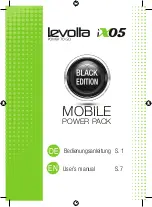
J .
VO LTMETER RANGE SELECTOR CIRCUIT
L o w
H i gh
1 1
T 3 2 2
tj
t./ T 323 .
I
I
,
I
i
R 3 2 6
'
---
�--��---
1 3 22.
T 3 2 1
T 3 2 I,
T 3 2 5
Vo l t m e t e r
r a n g e s e lec t o r c i r c u i t
F i g u r e
3 0
R 3 3 1
1"
P 3 2
I
R 1 0 8
---·····
r
···-··-·---·
' J;:;,
+ o ut
- o u t
The two trans istors T322 , T323 form a Schmitt-trigger circuit where the
pos itive feed-back is achieved with R326 . Only one
0
c
the two trans j sto
1·s
conduct at a time. The one that is conducting gives base current
and i :-; thus
opening T32 1 or T324, which in turn switch on 1321 or 1322 respect i \ ely .
The voltage divider R331
+
P32 1 , Rl08
i:3
designed so, that the
bas e voltage
of T32 3 is positive with respect to 11+out1 ' for output voltages small
er
than
6 , 5 V on 60 V models and 8 V on 32 V models . This switches
off T�2 3 a;1d
on T322 , in turn lighting 132 1 via T321.
For output voltages higher than mentioned above T323 opens
and l i ghts
1022
(high voltage range) via T324 instead.
When T32 1 conducts , T325 is conducting, shorting R 106+ Pl03 .
Then the only s eries resistor to the voltm eter is Pl02+ Rl07 which
gives
the
voltm eter an FSD of 6, 5 V (60 V models) or 8 V (32 V
model s ) .
When T32 1 is switched off, T325 stops conducting and
the
series resistance
to the voltmeter is Rl06+ Pl03+ Pl02+Rl0 7, giving FSD of 65 V (60 V models)
or 40 V (32 V models) .
34
















































